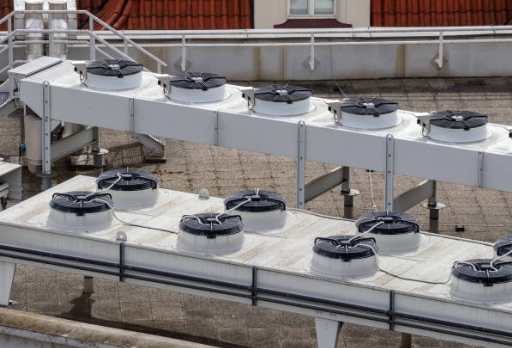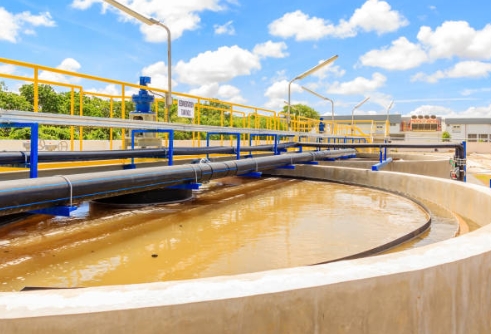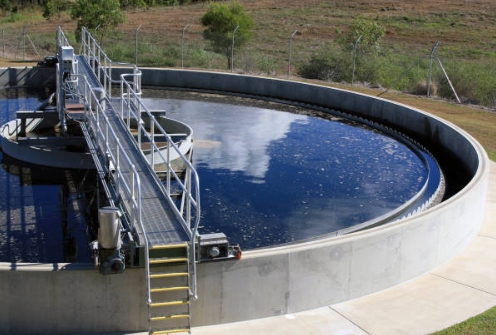Please Choose Your Language
Views: 222 Author: Carie Publish Time: 2025-05-28 Origin: Site








Content Menu
● Overview of Sewage Treatment Stages
● The Step That Uses Filters, Screens, and Sieves: Preliminary Treatment
>> What is Preliminary Treatment?
>> Role of Screens, Filters, and Sieves in Preliminary Treatment
● Other Steps Involving Filters and Screens
● Detailed Description of the Preliminary Treatment Process
● Importance of Screening in Sewage Treatment
● Advanced Screening Technologies
● Maintenance and Operational Considerations
● Integration with Other Preliminary Treatment Processes
● Environmental and Regulatory Importance
● Summary Table: Screening Devices in Preliminary Treatment
● FAQ
>> 1. What is the main purpose of using screens in sewage treatment?
>> 2. At which stage of sewage treatment are filters and screens used?
>> 3. What types of screens are commonly used in wastewater treatment?
>> 4. How do screens protect wastewater treatment plants?
>> 5. Are there any automatic screening systems?
Sewage treatment is a complex and essential process designed to remove contaminants from wastewater to protect public health and the environment. Among the various stages of treatment, the use of filters, screens, and sieves plays a crucial role in the initial removal of solid materials. This article explores in detail which step of sewage treatment employs these devices, their types, functions, and importance within the overall treatment process. Additionally, we will explore advanced technologies, maintenance considerations, and how screening fits into the broader context of wastewater management.

Wastewater treatment generally consists of four main stages:
- Preliminary Treatment
- Primary Treatment
- Secondary Treatment
- Tertiary Treatment
Each stage targets different types of contaminants and employs specific technologies to progressively clean the wastewater.
| Stage | Purpose | Typical Processes |
|---|---|---|
| Preliminary | Remove large solids and grit | Screening, grit removal |
| Primary | Remove settleable organic and inorganic solids | Sedimentation tanks |
| Secondary | Remove dissolved and suspended organic matter | Biological treatment (activated sludge) |
| Tertiary | Polishing and disinfection | Filtration, nutrient removal, chlorination |
Preliminary treatment is the first step in the sewage treatment process. It primarily focuses on removing large solids and debris that could damage or clog downstream equipment or interfere with treatment processes. This step sets the foundation for the effectiveness of the entire treatment plant.
- Screens are used to physically remove large objects such as rags, sticks, plastics, and other debris.
- Filters and sieves help capture smaller particles that pass through the screens.
- These devices protect pumps, pipes, and other machinery from damage and reduce the load on subsequent treatment steps.
1. Coarse Screens
- Have large openings (typically ≥ 0.25 inches or 6 mm).
- Capture large debris like wood, plastics, rags, and other bulky solids.
- Positioned at the very start of the treatment plant to remove the biggest solids.
- Examples include bar screens and coarse mesh screens.
2. Fine Screens
- Have smaller openings (0.06 to 0.25 inches or 1.5 to 6 mm).
- Remove smaller particles that pass through coarse screens.
- Often placed downstream of coarse screens but before biological treatment.
- Examples include perforated plate screens and step screens.
3. Micro Screens
- Even finer mesh to remove very small solids.
- Used in advanced preliminary or secondary treatment stages.
- These screens can have openings as small as 0.1 mm.
- Often used in tertiary treatment or advanced filtration systems.
Wastewater flows through bar screens or perforated plate screens that trap solids on the surface. These solids are then mechanically or manually removed and disposed of. Modern screens often have automatic cleaning mechanisms to improve efficiency, such as rakes or brushes that continuously clear the screen surface.
While preliminary treatment is the main step using screens and sieves, filtration also occurs later in the treatment process:
- Secondary and Tertiary Treatment may use disc filters, sand filters, or membrane filters to polish the effluent by removing fine suspended solids and microorganisms.
- These filters improve water clarity and quality before disinfection and discharge.
- For example, membrane bioreactors (MBRs) combine biological treatment with membrane filtration, providing high-quality effluent suitable for reuse.

1. Influent Wastewater Entry
- Raw sewage enters the treatment plant carrying a mix of solids, organic matter, and dissolved pollutants.
- It may contain rags, plastics, grit, oils, and other debris.
2. Coarse Screening
- Large objects like plastics, rags, and sticks are removed using bar screens.
- These screens prevent damage to pumps and downstream equipment.
- The captured solids are collected on the screen surface.
3. Fine Screening
- Smaller particles that pass coarse screens are removed by fine screens.
- This step reduces suspended solids and protects biological treatment units.
- Fine screens are often equipped with automatic cleaning systems to reduce manual labor.
4. Grit Removal
- After screening, grit chambers remove sand, gravel, and other heavy inorganic particles.
- Grit is too small to be screened but can cause abrasion and clogging if not removed.
- Grit chambers use gravity settling to separate these particles.
5. Disposal of Screened Material
- Collected solids are compacted and sent to landfill or incineration.
- Proper handling prevents environmental contamination.
- Some plants may use anaerobic digestion or composting for organic solids.
- Protects Equipment: Screens prevent large debris from damaging pumps, pipes, valves, and biological treatment units.
- Prevents Blockages: By removing solids early, screens reduce the risk of clogging and operational disruptions.
- Improves Efficiency: Reducing solids load enhances the performance of sedimentation tanks and biological reactors.
- Reduces Maintenance Costs: Less debris means fewer repairs and less downtime.
- Environmental Protection: Proper screening prevents solid waste from entering natural water bodies.
- Worker Safety: Automated screening reduces manual handling of raw sewage, improving safety.
Modern wastewater treatment plants employ sophisticated screening systems such as:
Automated Bar Screens
- Equipped with rakes or scrapers that continuously remove debris.
- Conveyors transport the collected solids to disposal areas.
- Sensors monitor screen performance and trigger cleaning.
Perforated Plate Screens
- Plates with holes or slots arranged in steps to increase surface area.
- Self-cleaning by vibration or rotation.
- Suitable for fine screening applications.
Rotary Drum Screens
- Cylindrical screens that rotate to filter solids continuously.
- Solids are scraped off the drum surface as it rotates.
- Efficient for high flow rates and variable loads.
Step Screens
- Inclined screens with steps that trap solids and allow water to pass.
- Solids are lifted out of the flow and discharged.
- Regular Inspection: Screens must be inspected for damage, blockages, and wear.
- Cleaning Frequency: Automated cleaning reduces manual labor but requires monitoring.
- Debris Disposal: Proper handling of screened solids is essential to avoid secondary pollution.
- Flow Management: Screens should be designed to handle peak flows without bypassing solids.
- Corrosion Resistance: Materials used must withstand harsh wastewater environments.
- Energy Efficiency: Modern screens aim to minimize energy consumption while maximizing removal efficiency.
Screening is often integrated with other preliminary processes such as:
- Grit Removal: Settling tanks or aerated chambers remove sand and grit after screening.
- Oil and Grease Removal: Skimmers or flotation units remove floating oils and grease.
- Flow Equalization: Holding tanks regulate flow to downstream processes, preventing overloads.
Together, these processes prepare wastewater for effective primary and secondary treatment.
- Many environmental regulations require effective removal of solids before discharge or reuse.
- Screening helps meet effluent quality standards by reducing suspended solids.
- Proper preliminary treatment reduces the risk of pollution incidents.
- It supports sustainable water management and protects aquatic ecosystems.
| Device Type | Opening Size | Purpose | Typical Location |
|---|---|---|---|
| Coarse Screen | ≥ 0.25 inches (6 mm) | Remove large debris | At influent entry |
| Fine Screen | 0.06 - 0.25 inches (1.5-6 mm) | Remove smaller solids | Downstream of coarse screens |
| Micro Screen | < 0.06 inches (1.5 mm) | Remove very fine solids | Advanced preliminary or secondary |
| Grit Chamber | N/A (settling) | Remove sand and grit particles | After screening |
The preliminary treatment step of sewage treatment is where filters, screens, and sieves are primarily used. These devices serve as the first line of defense by removing large and medium-sized solids from wastewater, protecting downstream equipment, and improving the efficiency of the entire treatment process. Coarse and fine screens are essential components in this phase, with advanced filtration occurring later in secondary and tertiary treatments. Understanding this step is fundamental for appreciating how modern wastewater treatment plants operate to safeguard environmental and public health.
By investing in effective screening technology and maintenance, treatment plants can ensure reliable operation, reduce costs, and meet stringent environmental standards. As wastewater treatment evolves, innovations in screening and filtration will continue to enhance water quality and sustainability.

Screens remove large solids and debris from wastewater to protect downstream equipment and improve treatment efficiency.
Filters and screens are primarily used during the preliminary treatment stage, the very first step in the process.
Coarse screens, fine screens, and micro screens are used, each with different opening sizes to capture various particle sizes.
By removing debris that can clog or damage pumps, pipes, and biological treatment units, screens reduce maintenance and operational problems.
Yes, many modern plants use automated bar screens and perforated plate screens with self-cleaning mechanisms to improve efficiency.
This article highlights the top stannous sulfate manufacturers and suppliers in the UK, focusing on their product quality, industrial applications, and market presence. It emphasizes the UK's strength in producing high-purity stannous sulfate for surface treatment, water treatment, and electroplating industries. Key players like REAXIS and Atotech lead the market with innovative solutions, while OEM support and regulatory compliance remain core advantages of UK suppliers. The article also addresses the compound's uses and includes a detailed FAQ to assist industry professionals.
Germany leads Europe in Stannous Sulfate manufacturing, supplying high-purity, reliable chemicals essential for electroplating, glass production, pharmaceuticals, and more. Key German suppliers like TIB Chemicals AG, MCC Menssing, Univar Solutions GmbH, and VMP Chemiekontor GmbH offer tailored solutions, strict quality control, and global distribution for diverse industrial demands.
This article explores the top stannous sulfate manufacturers and suppliers in Europe, highlighting leading companies like TIB Chemicals and Chimica Panzeri. It details production technologies, quality standards, industry applications, and OEM services, offering insights for markets requiring high-purity stannous sulfate chemicals.
This article explores the top stannous sulfate manufacturers and suppliers in France, highlighting their product quality, compliance with environmental standards, customized OEM services, and key industrial applications such as aluminum surface treatment, electronics, pharmaceuticals, and wastewater management.
This article explores the top stannous sulfate manufacturers and suppliers in America, detailing key companies, product forms, industries served, manufacturing processes, quality controls, and environmental considerations. It highlights the benefits of sourcing stannous sulfate locally with customization and technical support options. Insightful images illustrate stannous sulfate forms, production, and applications in industrial processes. Finally, a FAQ section addresses common queries related to stannous sulfate use and supply.
This comprehensive report explores Japan's top nickel sulfate manufacturers and suppliers, highlighting their production capabilities, market positions, and product applications. Featuring companies like Sumitomo Metal Mining and SEIDO Chemical Industry, the article delves into manufacturing processes, industry uses, and environmental practices, reflecting the pivotal role of Japanese firms in the advancing global nickel sulfate market.
South Korea is a leading global hub for nickel sulfate manufacturing, dominated by Korea Zinc and KEMCO with a combined annual capacity of 80,000 tons. Leveraging advanced smelting technologies and government-supported strategic status, these manufacturers supply high-quality nickel sulfate for electric vehicle batteries, surface treatment, and chemical industries. South Korean suppliers offer comprehensive OEM services to international clients, meeting growing global demand with innovation, sustainability, and quality.
This article provides a comprehensive overview of leading nickel sulfate manufacturers and suppliers in Portugal, covering their technological capabilities, product lines, market roles, and strict compliance with international standards. Highlighting diverse applications from electroplating to battery manufacturing, it showcases Portugal’s growing importance in the global nickel sulfate supply chain. Accompanied by relevant images, the article emphasizes sustainability, innovation, and quality as cornerstones of the Portuguese chemical sector.
This article explores the top nickel sulfate manufacturers and suppliers in Spain, highlighting their product offerings, quality standards, and strategic advantages. It covers Spanish industry applications, OEM services, and explains why Spain is a preferred sourcing hub for global chemical buyers. The article also includes detailed FAQs and relevant images to provide a comprehensive understanding of the nickel sulfate market in Spain.
Italy’s nickel sulfate manufacturing and supply chain is advanced, diverse, and globally integrated—supporting key industries like batteries, electroplating, and catalysts. With leading companies, customized services, and sustainable practices, Italian nickel sulfate manufacturers and suppliers are crucial to meeting the world’s growing demand for this essential chemical.
This article provides an in-depth overview of the top nickel sulfate manufacturers and suppliers in Russia, focusing on major companies like Norilsk Nickel, their production processes, market presence, environmental initiatives, and the diverse industrial applications of nickel sulfate. It serves as a valuable resource for international businesses looking to source high-quality nickel sulfate from Russia.
Aluminum alloys have become indispensable materials in modern industry, owing to their light weight, high strength-to-weight ratio, corrosion resistance, workability, and versatility. However, their durability—especially when used in challenging environments—is critically dependent on
Electrophoretic coatings, often referred to as *E-coatings* or *electrophoretic deposition (EPD)*, have revolutionized surface finishing in the modern manufacturing landscape. They blend chemistry, material science, and advanced technology to create coatings that are durable, uniform, and environmen
Discover Europe's most prominent Nickel Sulfate Manufacturers and Suppliers, including sustainability-focused innovators and rapid-response distributors serving the EV, electroplating, and advanced materials sectors. Learn about top companies, key trends, market drivers, and FAQs to inform your industrial chemical sourcing decisions. This comprehensive guide highlights the critical role nickel sulfate plays in Europe’s green industrial future.
This article details France’s leading role in nickel sulfate production, covering major manufacturers and suppliers, innovative production methods, sustainability commitments, and the industry’s critical role in green technology supply chains. It also examines market drivers, regulatory compliance, and supply chain strategies while answering common industry questions. The content is especially relevant for businesses seeking OEM solutions for aluminum profile treatment and battery production.
This comprehensive guide details the leading Nickel Sulfate Manufacturers and Suppliers in Germany, highlighting their strengths, product applications, and why Germany is a global leader. It covers selection criteria, market trends, and answers to key FAQs for buyers and industry professionals.
This article offers a comprehensive guide to the UK’s top Nickel Sulfate Manufacturers and Suppliers, highlighting industry applications, leading brands, and sourcing strategies in the rapidly growing British and global markets. From surface finishing to electric vehicle batteries, discover how to select the right partner and stay ahead of industry shifts.
This article explores the top Nickel Sulfate Manufacturers and Suppliers in America, highlighting their key products, application areas, and essentials of reliable sourcing. With detailed industry profiles, market trends, future outlooks, and FAQs, it serves as a vital comprehensive resource for businesses seeking high-quality nickel sulfate and dependable partnership.
Choosing the best chemical raw materials for aluminum profiles is **critical to ensuring strength, durability, corrosion resistance, and sustainability** in the final products. The selection impacts not only the mechanical and aesthetic qualities but also influences cost-effectiveness, production ef
In the global industrial landscape, **chemical raw materials for surface treatment** play a critically transformative role in enhancing the durability, functionality, and aesthetics of countless products. Surface treatment chemicals help prevent corrosion, improve adhesion, increase wear resistance,
